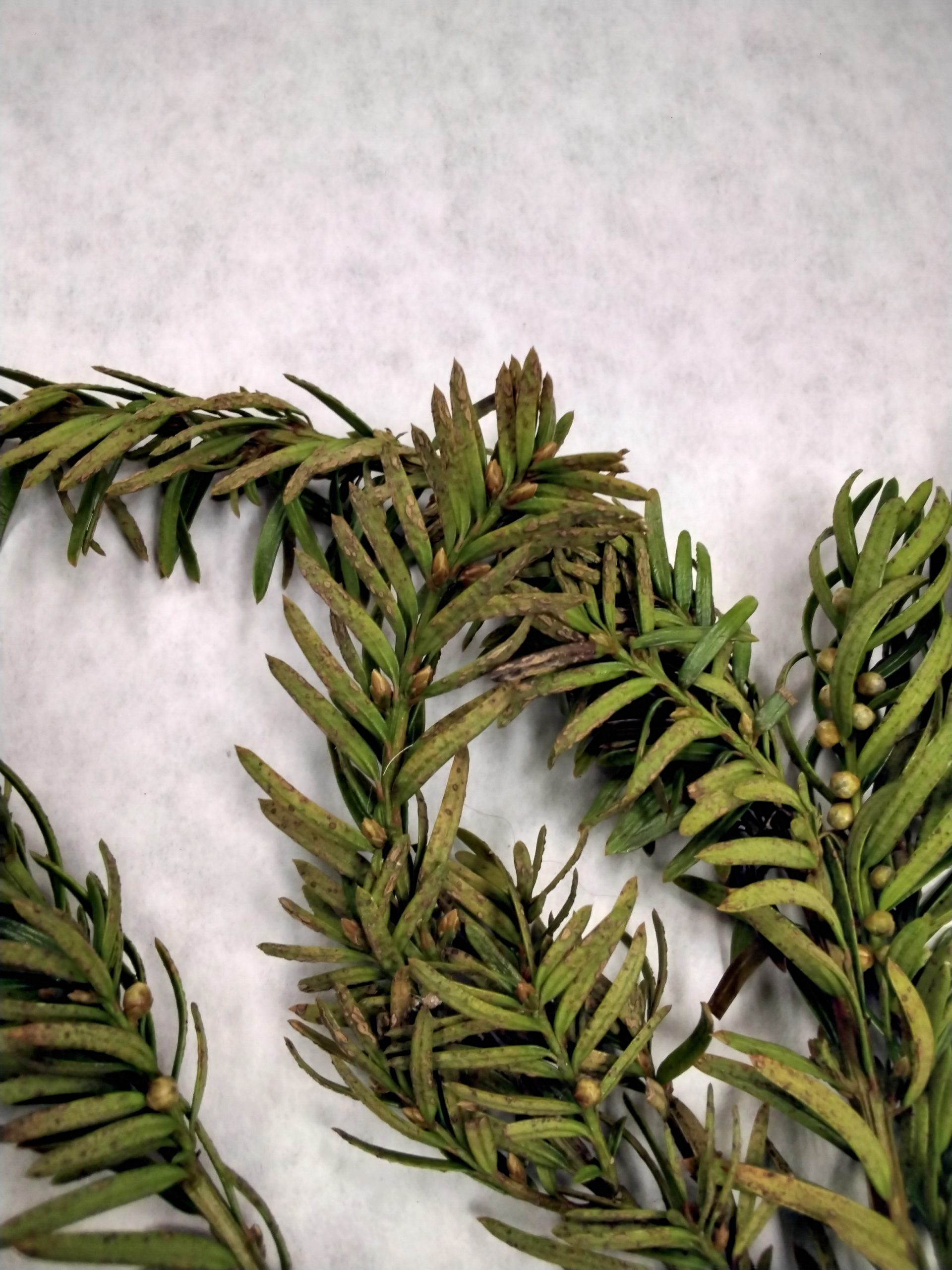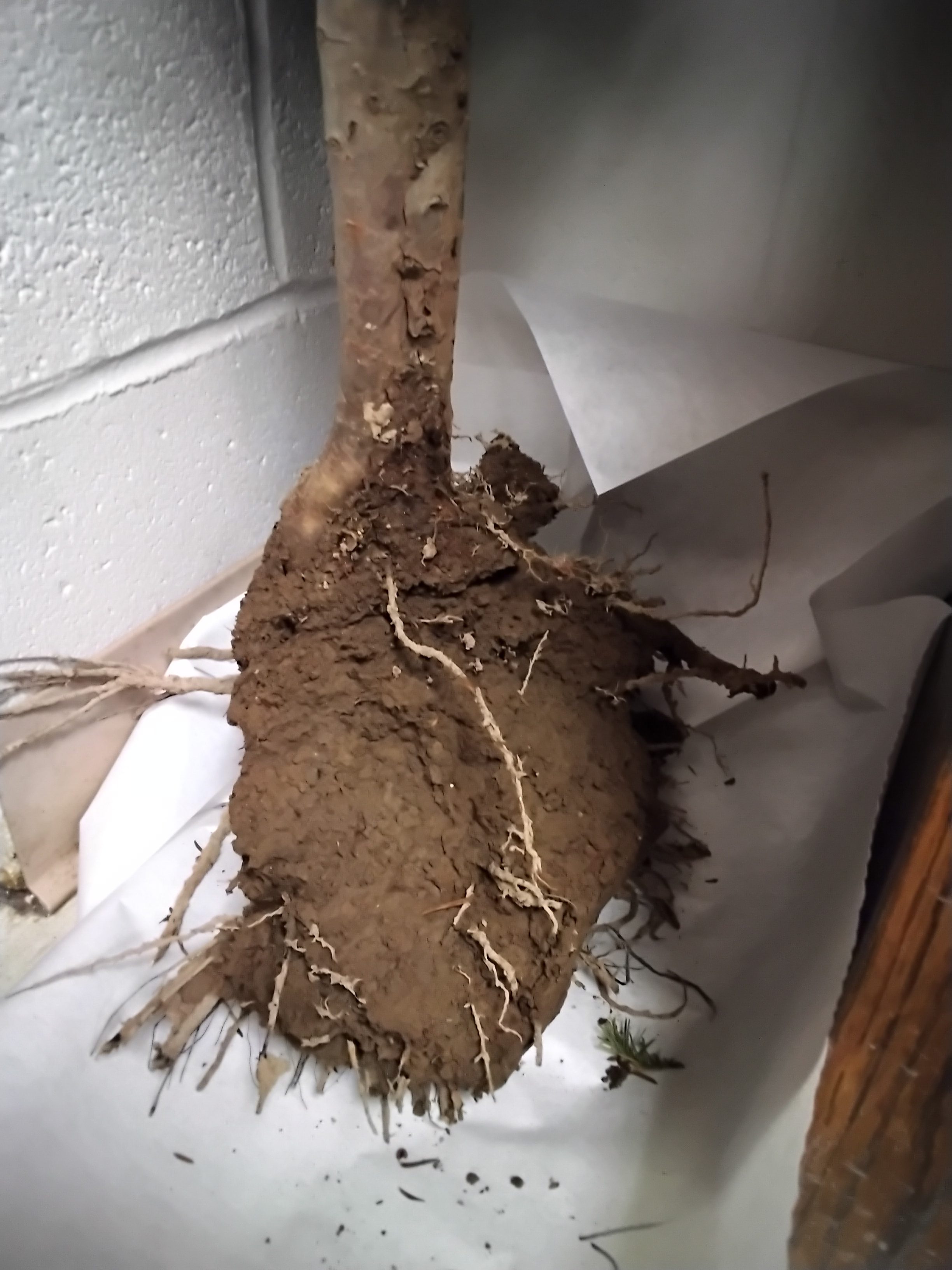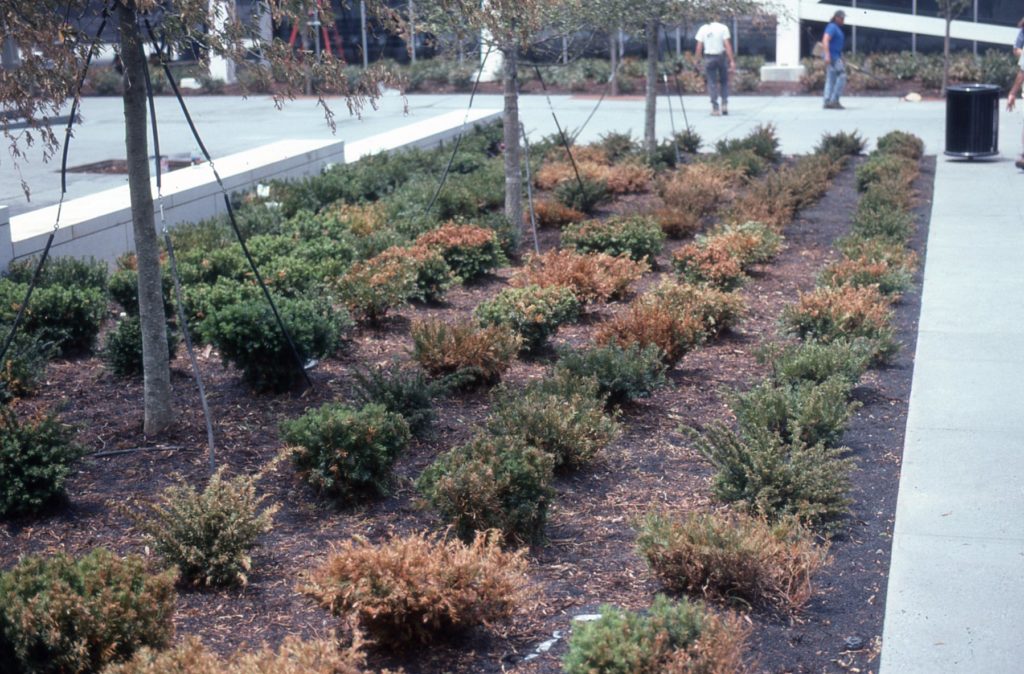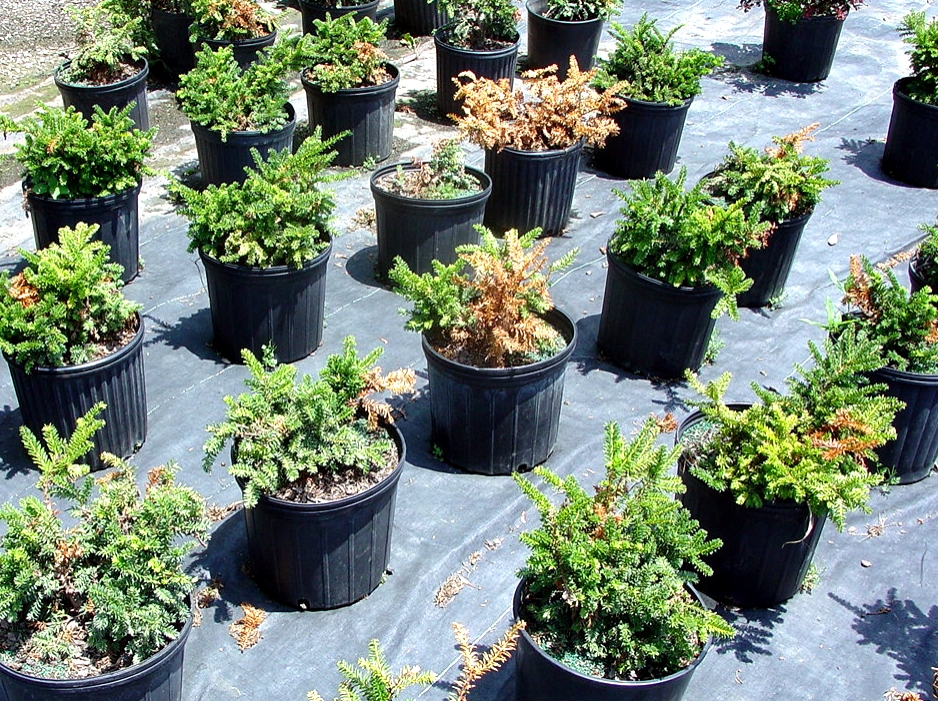Taxus species of evergreen shrubs are frequent submissions in the plant pest lab. Scroll to learn more about common problems we see contributing to yew decline.
To reduce the risk of decline, stress, pests, and diseases on yew it is important to select a suitable site for yew and ensure the soil area is well-drained. For more details about ideal growing conditions for yew please visit this helpful resource from NC State Extension.
There are other environmental conditions that can cause yellowing and browning in yews. Dramatic changes in winter temperatures can cause stress. Salt applied to icy roads and sidewalks can cause browning if applied close to yews. Damage to stems can leave wounds on yews that leave them susceptible to fungal canker pathogens.
With all plants, what is important to avoid plant disease and plant pests is planting the right plant in the right place. Ensure you plant your yews in well-drained soil, check root health before planting, and you will have a hardy and lovely evergreen shrub for many years to come!
Images of declining yews in different planting situations. Left image yews are suffering from overwatering and poorly drained soils, right images yews tested positive for phytophthora root rot. Plants cannot be diagnosed by images alone! Photos courtesy of Alan Windham.



